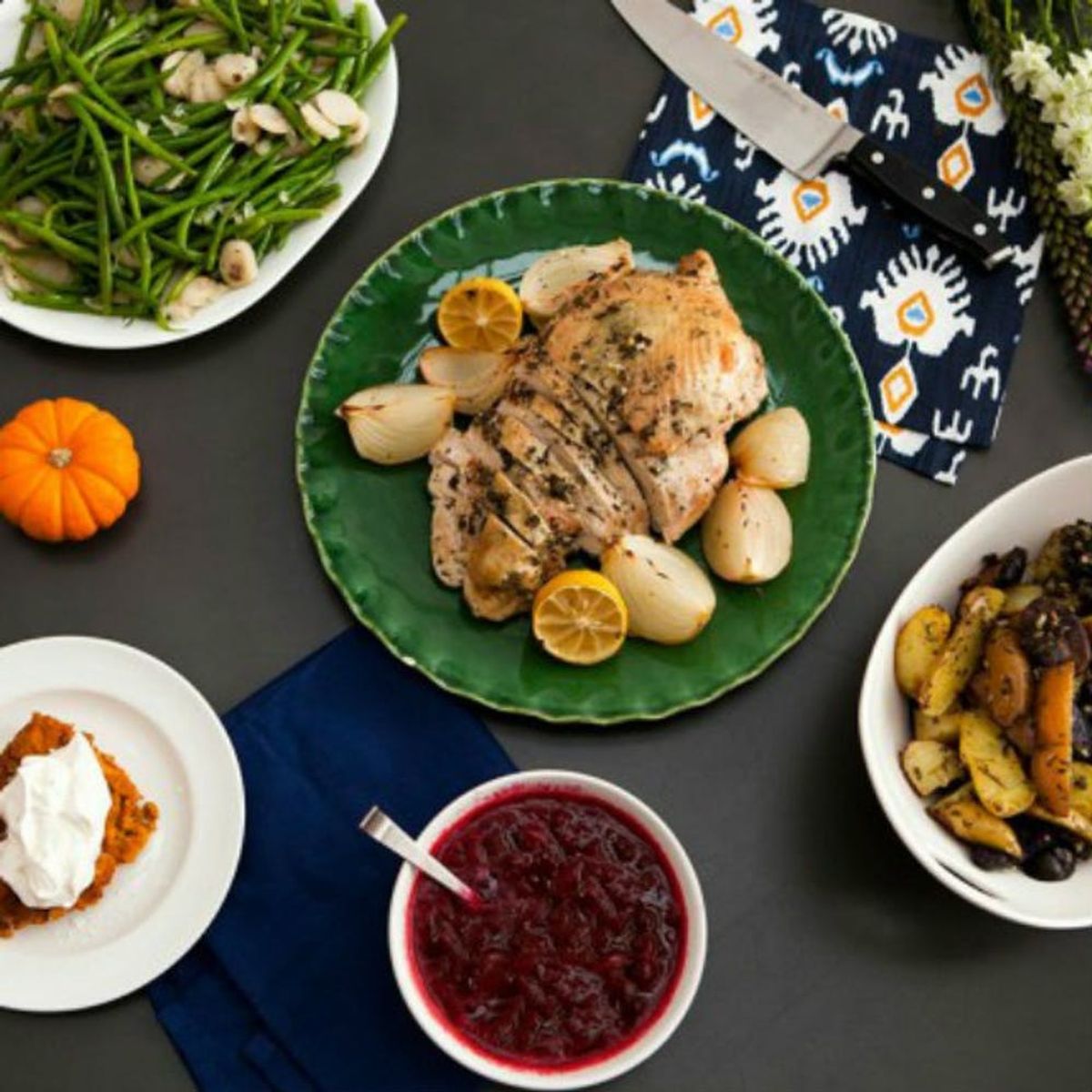4 Health Hacks to Beat the Dreaded Thanksgiving Food Coma

While sitting around the dinner table on Thanksgiving, it’s hard to not to be distracted by the oft-overwhelming and impressive array of gorgeous, delicious-looking and irresistible-smelling food right in front of you. Because saying no to your once-a-year fave sides is out of the question, we got an expert’s opinion on how to beat the dreaded food coma that can come after that delicious, Instagram-worthy meal. Dr. Joe Raphael, a practicing lifestyle medicine specialist in Los Angeles and Orange County, CA, gave us the scoop and several tips for enjoying that extra leg minus the need for a nap after.
1. Aim for leafy greens: Dr. Raphael claims that approximately 3,000 calories are consumed during a Thanksgiving meal — most of which are high in carbohydrates and can boost your insulin levels. Turkey contains tryptophan, which can produce serotonin in your brain (the chemical that makes you feel relaxed) and send you off to a “carbohydrate coma” post-consumption. So, if you’re in the mood to seriously chow down, stick to leafy greens, since they’re alkaline in response to acid buildup and won’t upset your gastrointestinal tract as much as other Thanksgiving food items.
2. Breathe deeply and sit up straight: Once you finally have your plate filled with food, it’s natural to want to inhale it all at once, but doing this too fast can lead to reflux, heartburn and intestinal discomfort. Slouching or lying down right after eating large quantities of food can encourage food to move out of your stomach and into your esophagus — yikes! Make sure you have good posture at the dinner table and remain upright for a couple hours after eating in order to avoid heartburn. (Pro Tip: If you struggle with maintaining good posture, try including light yoga in your everyday schedule — it helps!)
3. Exercise — but not too much: If you’re not too full at the dinner table, change your clothes, put on some tennis shoes and head out the door for a casual stroll. Blood sugar rises and falls after eating, but big spikes and irregular variations can be harmful to your health. Research shows that taking a 20-minute walk about 15 minutes after dinner can help lower post-meal blood sugar levels — this is especially relevant for those who have Type 2 diabetes.
Another study compared the outcome of taking an alcoholic digestif versus walking lightly on a treadmill after eating a large meal. Researchers found that walking sped up motility rates, which obviously helped aid digestion, while the alcoholic digestifs had no effect. Pro Tip: Make sure your casual walk post-dinner doesn’t evolve into strenuous exercise — this can lead to reflux or dyspepsia, an unpleasant upper abdominal pain caused by indigestion.
4. Plan for activities: Dr. Raphael claims that aerobic exercise may aid in motility, or the moving of food in your stomach. Take charge and plan for a group activity post-dinner! Suggest exploring local hiking trails or going on a quick bike ride, or start a light outdoor activity/game (i.e, tennis, basketball). Having something planned after dinner will encourage families to spend more time together (and stay active while doing it) and think less about opening up the fridge for leftovers.
Bottom line: Let yourself enjoy the wonderful food (you!) prepared. Just make sure that you drink plenty of water, chew your food and take your time! The food isn’t going anywhere — proof: all those leftovers.
Do you have any Thanksgiving traditions with your family that involve physical activity? Tell us about it in the comments below!
(Photos via Getty)



















